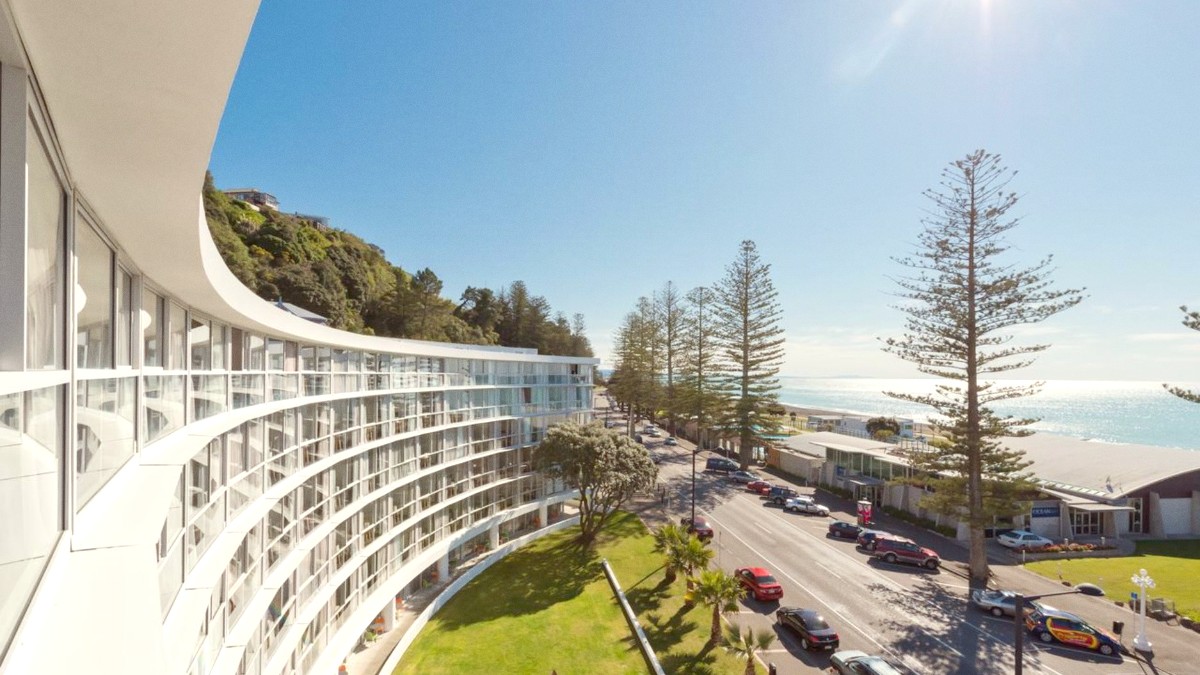
The East Coast, New Zealand
Summer (December - February) brings the warmest and driest weather to Napier, with average daytime temperatures of 20-25°C (68-77°F). Autumn (March - May) offers mild, pleasant temperatures (15-20°C / 59-68°F).
Winter (June - August) presents cooler temperatures (10-15°C / 50-59°F) and higher rainfall. Spring (September - November) sees temperatures between 15-20°C (59-68°F), with increasing sunshine and wind.
During the high season (December - February), expect higher prices for accommodation, flights, and rental cars. Attractions and popular areas become more crowded, specifically during school holidays and the Art Deco Festival.
Book well in advance for these peak times.
Warmest weather, highest prices, most crowds.
Perfect for beaches and all outdoor activities. All tours and attractions operate on full schedules. Long daylight hours.
Higher prices for accommodation, flights, and rental cars. Crowds, especially during school holidays and Art Deco Festival.
Pleasant temperatures, fewer crowds, better value.
Pleasant temperatures and fewer crowds. Better value for accommodation and flights. Autumn is ideal for wine touring during harvest.
Weather variable, chance of wind in spring and occasional rain. Seasonal tours might have reduced schedules. Beach swimming may be too cool.
Lowest prices, fewest tourists, cozy experiences.
Lowest prices for accommodation, flights, and rental cars. Fewer tourists, more relaxed experience. Suitable for museums, galleries, and winery visits.
Cooler temperatures, higher chance of rain, shorter daylight hours. Some outdoor activities less appealing or unavailable. Warm, waterproof clothing needed.
The Art Deco Festival transforms Napier into a 1930s wonderland every year in mid-February. For a full Art Deco immersion, plan your visit around these dates. Autumn (March-April) is an excellent time for wine touring, as this is harvest season. Cellar door experiences are available year-round.
Beach activities and swimming are best from December to March, with the warmest ocean temperatures. Cycling the Hawke's Bay Trails is optimal in spring, summer, and autumn due to mild temperatures. Gannet Colony Tours at Cape Kidnappers operate from September to April, during the breeding season.
Mid-February annually. Book accommodation far in advance.
Autumn (Mar-Apr) for harvest, otherwise year-round cellar door visits.
December to March for warmest ocean temperatures and reliable sun.
Spring, summer, and autumn offer comfortable rides.
September to April, during the breeding season.
Prepare the correct documentation for a smooth arrival in Napier.
The NZeTA (New Zealand Electronic Travel Authority) is for visitors from visa-waiver countries, including most of Europe, USA, Canada, UK, and Australia. Apply online via the official Immigration New Zealand website or app.
Have your passport valid for at least 3 months beyond your departure date (6 months recommended by some airlines). Complete the arrival card received on your flight or cruise accurately.
For general tourism in Napier, no specific permits are typically for beyond your visa or NZeTA. Different visa categories apply for commercial fishing or working.
New Zealand is not typically a budget destination, but opportunities exist to manage expenses.
The official currency of New Zealand is the New Zealand Dollar (NZD), known as the "Kiwi Dollar." Exchange foreign currency at major banks or exchange bureaus.
ATMs are widely available throughout Napier. Credit and debit cards (Visa, Mastercard, American Express) are widely accepted across New Zealand. Notify your bank of travel plans.
Expect NZD $70 - $120 daily. Focus on hostel dorms, self-catering meals, free attractions, and local buses or walking.
Accommodation: $30-$50 (dorm bed)
Food: $20-$40 (supermarket/fast food)
Expect NZD $150 - $300 daily. Stay in motels, eat at casual restaurants, share rental cars, and enjoy some paid tours.
Accommodation: $100-$180 (motel/B&B)
Food: $50-$100 (casual restaurants)
Expect NZD $400+ daily. Opt for boutique hotels, fine dining, private transfers, and exclusive tours.
Accommodation: $250-$500+ (boutique/luxury)
Food: $100-$200+ (fine dining)
| Category | Item | Price Range (NZD) |
|---|---|---|
| Accommodation | Hostel dorm bed | $30-50 |
| Accommodation | Mid-range hotel | $100-250 |
| Meals | Mid-range restaurant meal | $30-50 per person |
New Zealand maintains high standards for public health and safety, but awareness of local conditions is always wise.
No specific vaccinations are for entry. Routine vaccinations should be up to date.
High UV levels. Use High SPF sunscreen, wear a Wide-brimmed hat, and Sunglasses.
Common near water. Use Insect repellent and wear long clothing.
Emergency Number: 111 (Police, Fire, Ambulance)
New Zealand has a well-regarded public healthcare system. Public hospitals provide emergency services. Napier Urgent Care handles non-life-threatening medical issues after hours.
Pharmacies are available for over-the-counter and prescription medications. Tap water is safe to drink. Food hygiene standards are high.
Always consult your doctor before traveling to confirm any personal health recommendations.
New Zealand has a low crime rate, and Napier is a very safe city for travelers.
Secure valuables, avoid poorly lit areas at night, and stay aware of your surroundings.
No neighborhoods in Napier are known for high crime rates or should be avoided.
New Zealand sits on the "Pacific Ring of Fire," an active seismic zone.
Comprehensive travel insurance is strongly recommended for all visitors. While New Zealand's ACC covers medical costs for accidental injuries, it does not cover illness, non-medical costs, or lost belongings.
Medical emergencies (for illnesses), emergency medical evacuation, trip cancellation or interruption.
Coverage for loss or theft of personal belongings (luggage, electronics, documents).
Protection for travel delays and other unforeseen disruptions.